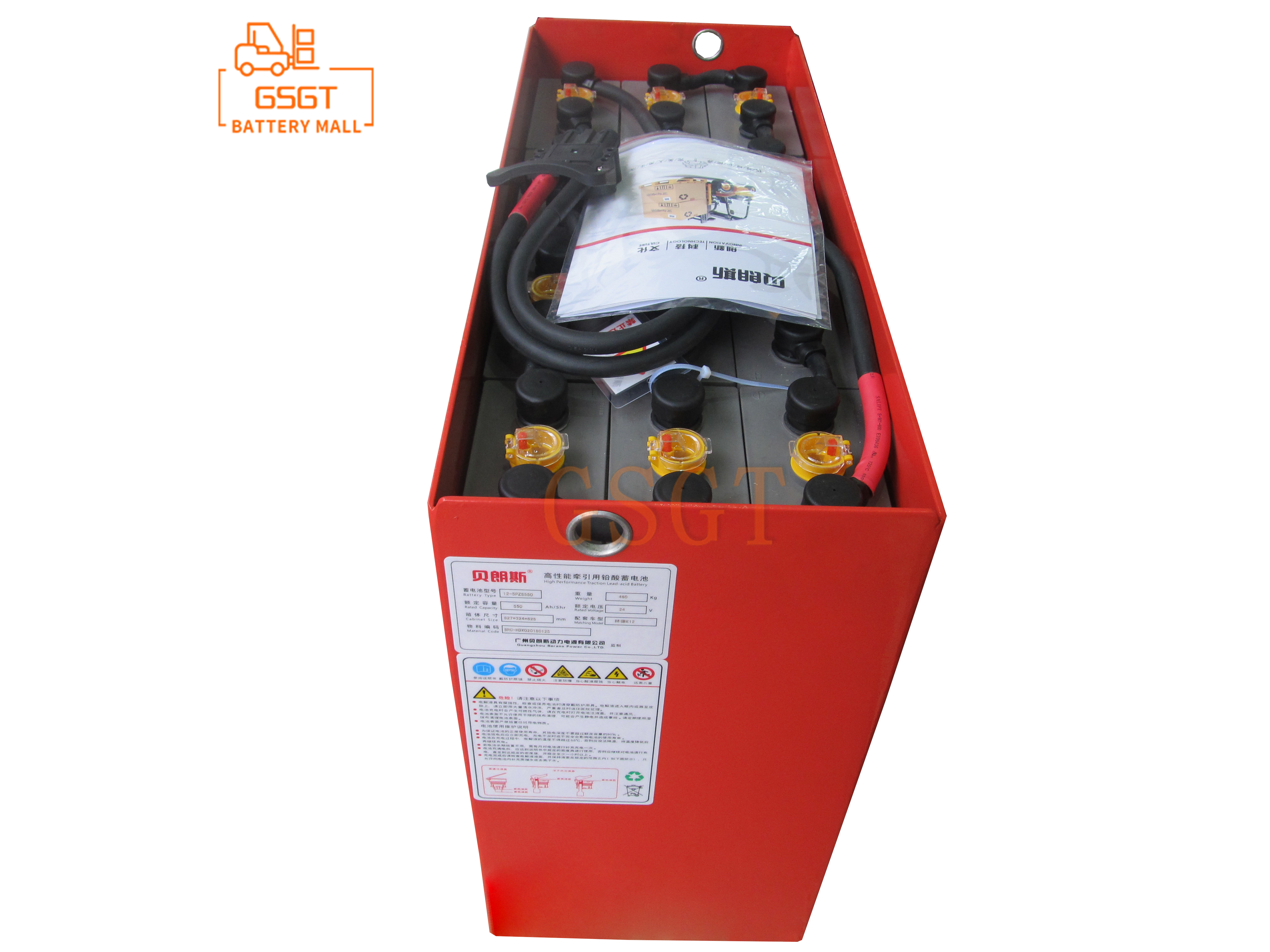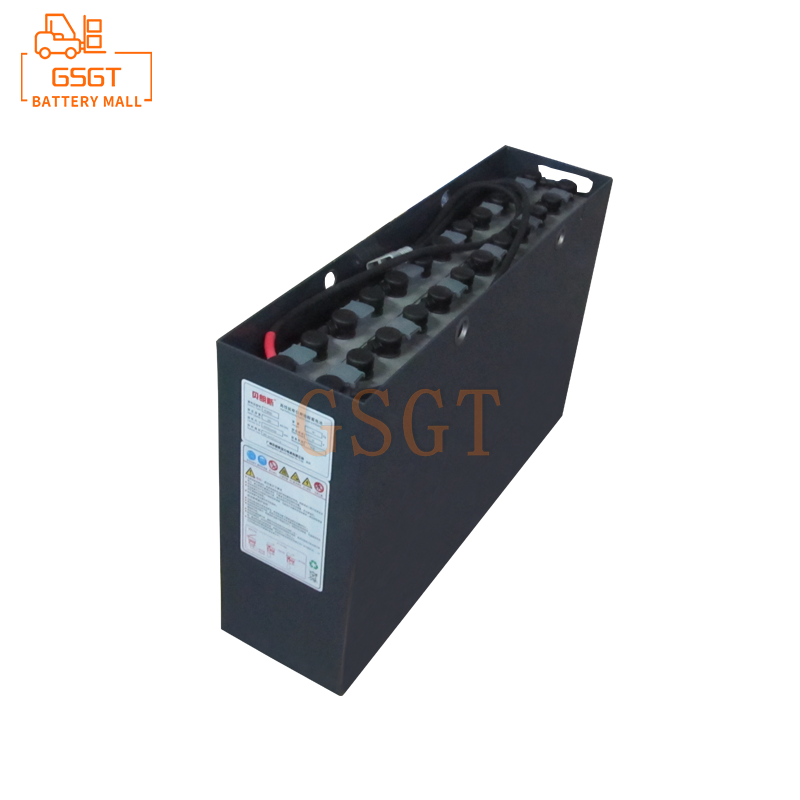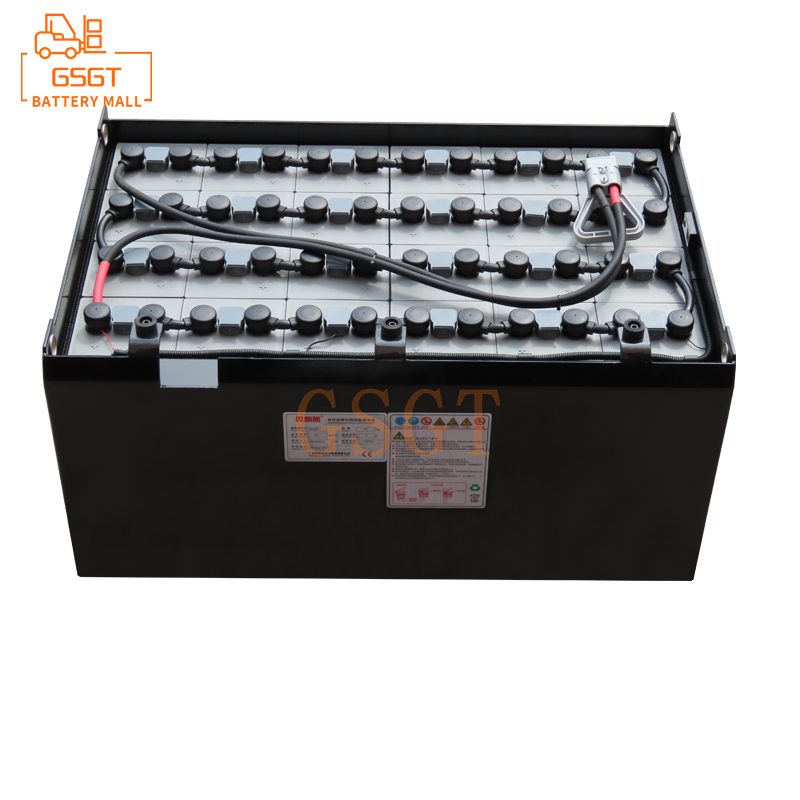Time:2025-05-29 08:47:56
Browse:703
Introduction
In the field of logistics handling, forklifts, as important mechanical equipment, are widely used in warehouses, factories and other places. Lead-acid batteries have become the main power source for forklifts due to their advantages such as low cost, mature technology and large capacity. However, as the usage time increases, the individual cells in the lead-acid battery pack will experience inconsistent voltage and capacity, that is, the imbalance problem. Imbalance not only reduces the overall performance of the battery pack, shortens the battery's service life, but may also affect the normal operation of the forklift. Equalization charging technology, as an effective means to solve this problem, is receiving increasing attention. A thorough understanding and mastery of the equalization charging technology for forklift lead-acid batteries is of great significance for enhancing the working efficiency of forklifts and reducing operating costs.
During the electrochemical reaction process of charging and discharging, the nominal voltage of each individual cell is 2V. When multiple individual cells are connected in series to form a battery pack, the total voltage of the battery pack is equal to the sum of the voltages of each individual cell. However, due to differences in manufacturing processes, varying usage environments, and imbalances during charging and discharging, the actual voltage and capacity of each individual battery will gradually deviate.
The causes of imbalance
Manufacturing process differences
During the production process of lead-acid batteries, although manufacturers strive to ensure product consistency, due to the limitations of technological levels, there are still subtle differences among different individual batteries in terms of plate materials, electrolyte concentration, and assembly processes. These differences may not be obvious in the early stage of battery use, but as the number of charge and discharge cycles increases, they will gradually lead to an expansion of performance differences among individual batteries, and eventually result in an imbalance. For instance, the purity and activity of the plate materials vary, which can affect the rate and efficiency of electrochemical reactions, causing the capacity and voltage of some individual cells to deviate from those of others.
Environmental impact of use
In the actual use of forklifts, the working environment is complex and changeable. Temperature is one of the important factors affecting the performance of lead-acid batteries. In a high-temperature environment, the chemical reaction rate of the battery accelerates, the self-discharge phenomenon intensifies, resulting in a faster decline in battery capacity. In a low-temperature environment, the viscosity of the electrolyte increases, the diffusion rate of ions slows down, the internal resistance of the battery increases, and the charging and discharging performance deteriorates. If forklifts operate frequently in different temperature environments, each individual battery is affected by different temperatures, which can easily lead to imbalance. In addition, vibration and shock can also have an impact on batteries. During the process of forklifts handling goods, vibration and shock are inevitable, which may cause the internal plates of the battery to loosen and the electrolyte to be unevenly distributed, thereby affecting the performance of the battery and exacerbating the occurrence of imbalance.
The charging and discharging process is unbalanced
In the daily use of forklifts, the standardization of charging and discharging operations has a significant impact on the balance of batteries. If during the discharge process, some individual batteries are over-discharged while others are not fully discharged, and this situation persists for a long time, the over-discharged batteries will gradually experience problems such as reduced capacity and increased internal resistance, and the differences between them and other batteries will become increasingly significant. During the charging process, if the charger cannot provide a uniform charging current for each individual battery, it will also lead to insufficient charging of some batteries and overcharging of others. For instance, when the output voltage of the charger is set too high, it will cause some batteries to be in an overcharged state, accelerating the loss of water in the batteries and the aging of the plates. If the output voltage is too low, it will cause some batteries to not be fully charged, and their capacity cannot be fully restored. In addition, during the operation of forklifts, changes in load can also cause unstable charging and discharging currents of the battery, further exacerbating the imbalance.
The principle of equalization charging technology
Voltage equalization principle
The core objective of equalization charging is to make the voltages of each individual battery in the battery pack tend to be consistent. The basic principle is to adjust the voltage difference between individual cells by providing additional charging to those with lower voltages or appropriate discharging to those with higher voltages. During the charging process, by monitoring the voltage of each individual battery, when it is found that the voltage of a certain individual battery is lower than the set equalization voltage threshold, the equalization charging device will automatically increase the charging current for that battery, causing its voltage to gradually rise. Conversely, when the voltage of a single cell exceeds the equilibrium voltage threshold, the device will take measures to limit its charging current or perform a slight discharge to reduce the voltage. In this way, after a period of equalization charging, the voltages of each individual battery can gradually approach each other and reach a balanced state.
Capacity balancing principle
In addition to voltage balancing, capacity balancing is also an important aspect of equalization charging. Since the capacity differences of individual batteries can lead to a decline in the performance of the battery pack during charging and discharging, it is necessary to balance the capacity of each individual battery through equalization charging. The principle of capacity balancing is based on the measurement and control of ampere-hours during the charging and discharging process of batteries. When charging, more charging time and current should be given to the single-cell batteries with lower capacity to enable them to store more electricity. When discharging, control the depth of discharge of single-cell batteries with higher capacity to prevent them from over-discharging. In this way, the capacity of each individual battery is gradually adjusted to keep it relatively consistent during long-term use, thereby enhancing the overall performance and service life of the battery pack.
Types of equalization charging technology
Passive equalization technology
Passive equalization technology is a relatively simple and low-cost equalization method. It mainly achieves balancing by paralleling a resistor in each individual battery. During the charging process, when the voltage of a certain individual battery rises rapidly and exceeds that of other batteries, the corresponding resistor of that battery will automatically conduct, allowing part of the charging current to be dissipated in the form of heat through the resistor, thereby slowing down the charging speed of that battery and providing more charging time for other batteries, ultimately achieving voltage balance among all individual batteries. The advantages of passive equalization technology are its simple circuit structure, easy implementation and low cost. However, its drawbacks are also quite obvious. As it achieves equalization through resistance discharge, it leads to energy waste, and the equalization speed is relatively slow, resulting in a relatively poor effect. Especially when the battery pack capacity is large and the number of individual cells is considerable, the limitations of passive balancing technology become more prominent.
Active balancing technology
Compared with passive balancing technology, active balancing technology has significantly improved in terms of balancing effect and energy utilization efficiency. Active balancing technology mainly achieves balancing by transferring energy between individual battery cells. Specifically, it can transfer the energy from the single cells with higher voltage and larger capacity to those with lower voltage and smaller capacity, thereby achieving voltage and capacity balance in the battery pack. Active balancing technology can be further subdivided into rechargeable balancing and energy transfer balancing.
Rechargeable equalization is a system where each battery monitoring cell is equipped with a DC/DC power module. In the float charging state, the battery cell with the lowest voltage is charged separately to increase its charging capacity and prevent undercharging of batteries with poor performance until the set voltage equalization degree is achieved. This approach is highly targeted, directly charging undercharged or underperforming batteries. However, due to the need to build a DC/DC power module into each monitoring cell, the cost is relatively high, and it is prone to overcharging (if there is a misjudgment, overcharging may occur), with many fault points and high subsequent maintenance costs.
Energy transfer type active balancing is carried out in a lossless energy transfer manner, transferring energy from batteries with higher voltages to those with lower voltages, thereby achieving voltage balancing for the entire group. During the transfer process, almost no energy loss is involved, so it is also called lossless balancing. Its advantages are low energy loss, high efficiency, long duration, large current and quick effect, but the circuit is complex and the cost is high.
Equalization charging operation method
Automatic equalization charging operation
Automatic equalization charging is a kind of equalization charging method with a relatively high degree of intelligence. Many modern forklift lead-acid battery chargers are equipped with an automatic equalization charging function. When the number of charging cycles reaches a certain condition, such as reaching sixteen 100% full charges or five times not reaching 100% full charges, the charger will automatically activate the equalization charging function. During the automatic equalization charging process, the charger will first charge the battery pack according to the normal charging procedure. Approximately 20 hours after the charging begins, the automatic equalization program is activated. The charger monitors the voltage of each individual battery in real time and automatically adjusts the charging current for each individual battery based on the preset equalization algorithm. This process lasts approximately 2 hours. Once completed, the equalization charging automatically ends and the charger returns to the normal charging or float charging state. Automatic equalization charging is simple to operate and does not require manual intervention. It can effectively ensure the balance of the battery pack. However, it needs to be equipped with a charger with corresponding functions, and the quality and performance of the charger have a significant impact on the equalization effect.
Manual equalization charging operation
Manual equalization charging requires manual operation. First, connect the battery to the charger plug. After plugging in, the charger will perform a self-check. After the self-check is passed and charging begins, the operator needs to press the equalization charging button on the charger, usually for about one second. At this time, the equalization charging mode indicator light of the charger starts to flash, indicating that the manual equalization charging mode has been set up. When the charger fully charges the battery, it will stop charging for one hour and then perform a two-hour equalization charge. During these two hours, the charger adjusts the charging of individual batteries according to the preset balancing strategy to achieve a balance between voltage and capacity. Manual equalization charging requires operators to have certain professional knowledge and operational skills, and the operation process is relatively complicated. However, for some chargers that do not have an automatic equalization function or when special maintenance of the battery is needed, manual equalization charging is an effective means.
Conclusion
The equalization charging technology of forklift lead-acid batteries plays a crucial role in improving battery performance and extending battery service life. By thoroughly understanding the working principle of lead-acid batteries, the causes of imbalance, as well as the principles and types of equalization charging technology, it can provide a basis for choosing the appropriate equalization charging method. Whether it is automatic equalization charging or manual equalization charging, it is necessary to strictly follow the operation method to ensure the effect of equalization charging. From practical application cases, it can be seen that the equalization charging technology has achieved remarkable results in the maintenance of forklift batteries in logistics warehouses, factories and other places, which can effectively reduce operating costs and improve work efficiency. With the continuous development of technology, equalization charging technology will be constantly improved, providing a more reliable guarantee for the application of lead-acid batteries in forklifts. In the future use and maintenance of forklifts, more emphasis should be placed on the application of equalization charging technology, and the charging strategy should be continuously optimized to give full play to the performance advantages of lead-acid batteries.

$1960

$1500

$1060

$3070

MESSAGE
Professional And Efficient
Security
Affordable Price
Professional Services